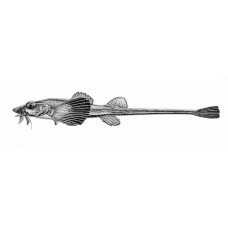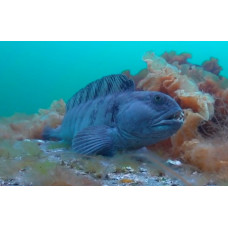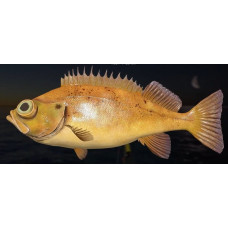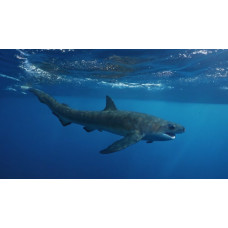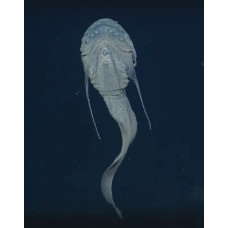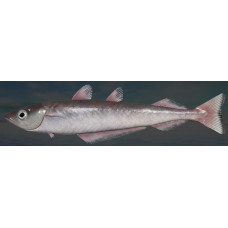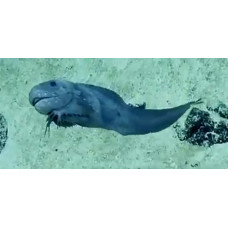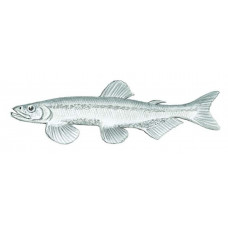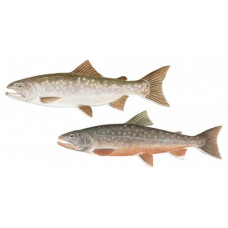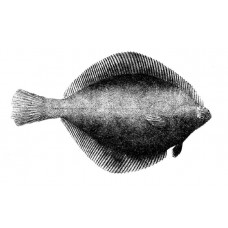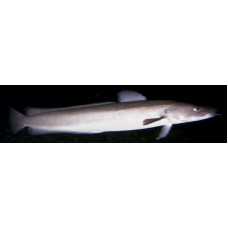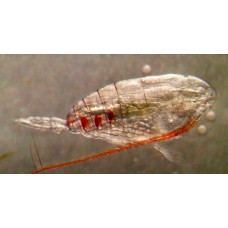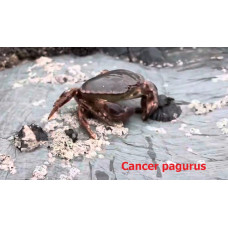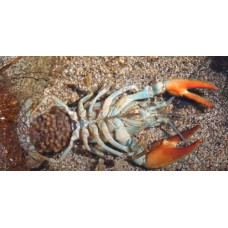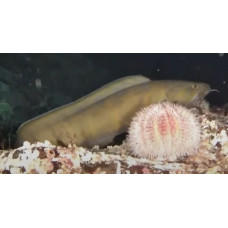Fauna of the Norwegian Sea (Arctic Ocean)
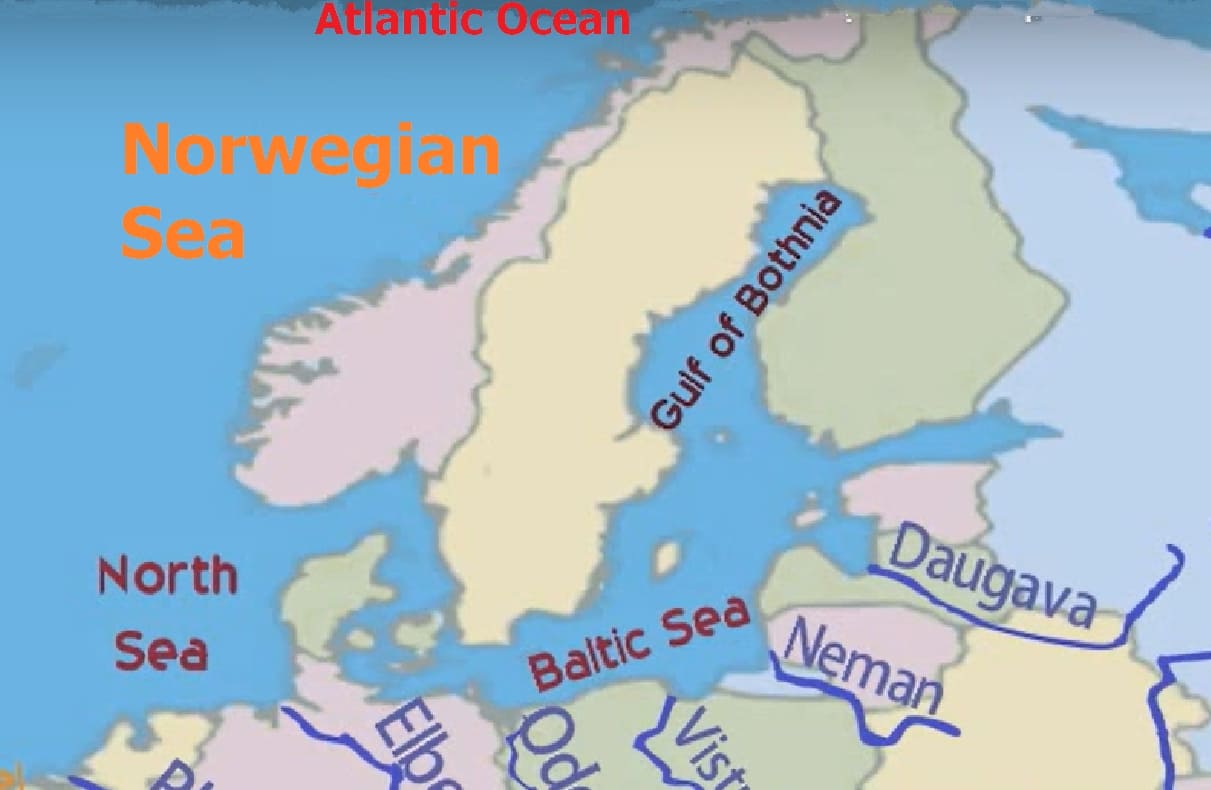 It is a marginal sea of the Arctic Ocean located between the Scandinavian Peninsula, Iceland, and Jan Mayen Island. Its area is 1,340 thousand km². Salinity: 35 ‰. Its greatest depth is 3,970 meters. Four major water masses originating in the Atlantic and Northern Oceans converge in the Norwegian Sea, and the associated currents are fundamental to the global climate. The tides in the sea are semidiurnal, meaning they rise twice a day to a height of about 3.3 meters. The largest rivers that flow into the sea are the Namsen, the Ranelva, and the Vefsna. They are relatively short, but they have high discharge rates due to their steep, mountainous terrain.
It is a marginal sea of the Arctic Ocean located between the Scandinavian Peninsula, Iceland, and Jan Mayen Island. Its area is 1,340 thousand km². Salinity: 35 ‰. Its greatest depth is 3,970 meters. Four major water masses originating in the Atlantic and Northern Oceans converge in the Norwegian Sea, and the associated currents are fundamental to the global climate. The tides in the sea are semidiurnal, meaning they rise twice a day to a height of about 3.3 meters. The largest rivers that flow into the sea are the Namsen, the Ranelva, and the Vefsna. They are relatively short, but they have high discharge rates due to their steep, mountainous terrain.
The thermohaline circulation affects the climate of the Norwegian Sea, where the regional climate can differ significantly from the average. Additionally, there is a temperature difference of approximately 10°C between the sea and the coastline. Unlike the Greenland Sea and other Arctic seas, the Norwegian Sea is ice-free year-round due to its warm currents. In winter, convection between the relatively warm water and cold air plays an important role in the Arctic climate. The 10-degree July isotherm runs across the northern boundary of the Norwegian Sea. In winter, the Norwegian Sea generally has the lowest air pressure in the entire Arctic region. Water temperatures in most of the sea range from 2 to 7 °C in February and from 8 to 12 °C in August.
Flora and fauna of the Norwegian Sea
The Norwegian Sea is a transition zone between boreal and Arctic conditions, containing flora and fauna characteristic of both regions. The southern boundary of many Arctic species passes through North Cape, Iceland, and the center of the Norwegian Sea. Meanwhile, the northern boundary of boreal species lies near the boundary between the Greenland Sea and the Norwegian and Barents Seas. Thus, these areas overlap. Some species, such as the Iceland scallop (Chlamys islandica) and capelin (Mallotus villosus), tend to occupy the area between the Atlantic and Northern Oceans.
Most of the Norwegian Sea's aquatic life is concentrated in the upper layers. It is estimated that only 2% of the biomass in the entire North Atlantic is produced at depths below 1,000 meters, with only 1.2% occurring on the seafloor. On average, phytoplankton blooms, characterized by maximum chlorophyll concentration, occur on May 20, with a south-to-north shift from mid-April to mid-June. The main phytoplankton forms are diatoms, particularly the Thalassiosira and Chaetoceros genera. After the spring bloom, haptophytes of the genus Phaeocystis pouchetti become dominant.
Plankton and marine benthic organisms in the Norwegian Sea
The zooplankton population is primarily composed of the copepod species Calanus finmarchicus and Calanus hyperboreus. C. finmarchicus occurs approximately four times more frequently than C. hyperboreus. C. finmarchicus inhabits Atlantic waters, while C. hyperboreus dominates Arctic waters. These two species of plankton are the staple diet of most marine predators. The most important krill species are Meganyctiphanes norvegica, Thysanoessa inermis, and Thysanoessa longicaudata. Unlike the Greenland Sea, the Norwegian Sea has a significant presence of calcareous plankton, such as coccolithophorids and globigerina. Various bottom-dwelling animals are abundant in the coastal zone and in shallow waters, including crustaceans (such as lobsters, crabs, shrimp, and langoustines), mollusks, marine worms, and other animals. Many crustaceans are trades for. Pandalus borealis shrimp play an important role in the diet of fish, especially cod and blue whiting (Micromesistius poutassou), and are mainly found at depths of 200 to 300 meters. The amphipod population includes several species of polyps and jellyfish, such as the giant Cyanea, which is the world's largest jellyfish. The Norwegian Sea is notable for its extensive coral reefs of Lophelia pertusa, which are home to various species of fish. These corals are widespread in many peripheral areas of the North Atlantic, but never reach the same numbers or concentrations as on the Norwegian continental shelf.
Fish in the Norwegian Sea
The world of fish in the Norwegian Sea is diverse and plentiful. There are more than 120 species of fish, some of which are important to the commercial fishing industry. These include: European pollock (Pollachius pollachius), navaga (Eleginus nawaga), polar cod (Boreogadus saida), European plaice (Pleuronectes platessa), common dab (Limanda limanda), Atlantic halibut (Hippoglossus hippoglossus), and Greenland halibut (Reinhardtius hippoglossoides). Other permanent inhabitants of this sea include the Atlantic mackerel (Scomber scombrus), European smelt (Osmerus eperlanus), cusk (Brosme brosme), common ling (Molva molva), fourhorn sculpin (Myoxocephalus quadricornis), and moustache sculpin (Triglops murrayi). Moskalev's tadpole (Careproctus moskalevi), broad-mouth tadpole (Careproctus latiosus), blackhead strainer snailfish (Rhodichthys melanocephalus), Atlantic poacher (Leptagonus decagonus) and hooknose (Agonus cataphractus). The Atlantic wolffish (Anarhichas lupus) and the spotted wolffish (Anarhichas minor) are not uncommon in these areas. The coastal waters are the most important spawning grounds for Atlantic herring (Clupea harengus) populations. During the breeding season, pollock (Pollachius virens) and haddock (Melanogrammus aeglefinus) enter the area. Coral reefs are inhabited by various species of the genus Sebastes, including rose fish (Sebastes norvegicus), beaked redfish (Sebastes mentella), and Norway redfish (Sebastes viviparus). Atlantic salmon (Salmo salar), Arctic char (Salvelinus alpinus), and nelma (Stenodus nelma) are particularly valuable prey for anglers.
Mammals of the Norwegian Sea
The Norwegian Sea is home to large populations of common minke whales (Balaenoptera acutorostrata), humpback whales (Megaptera novaeangliae), sei whales (Balaenoptera borealis), and orcas (Orcinus orca). White-beaked dolphins (Lagenorhynchus albirostris) are found in the area's coastal waters. Orcas and some other whale species visit the sea during the summer months to feed, and their populations are closely linked to herring stocks. Rorquals are the most common whales at sea. The bowhead whale (Balaena mysticetus) was a major consumer of plankton, but it has almost disappeared from the waters due to intensive whaling. Similarly, blue whales (Balaenoptera musculus) used to form large groups between Jan Mayen and Svalbard but are now almost absent. The northern bottlenose whale (Hyperoodon ampullatus) is quite rare in the Norwegian Sea.
Sharks in the Norwegian Sea
Despite its milder climate and warmer water compared to other parts of the Arctic Ocean, this sea is not suitable for many shark species to live in permanently. Only the Greenland shark (Somniosus microcephalus) has comfortably settled here. However, you may occasionally encounter other species of sharks in this area, such as the porbeagle (Lamna nasus) and the spiny dogfish (Squalus acanthias), which prefer cooler waters and inhabit some areas of the Norwegian Sea. The basking shark (Cetorhinus maximus), found in the cool and warm temperate waters of all oceans, is occasionally seen here. There is also information about the capture of an extremely rare deep-water species, the frilled shark (Chlamydoselachus anguineus), off the coast of Norway. At these latitudes, the bigeye thresher shark (Alopias superciliosus) is often found, and it is quite probable to encounter the small-spotted catshark (Scyliorhinus canicula) and the silky shark (Carcharhinus falciformis). None of these predators pose a serious threat to humans. There have been no recorded cases of death or injury from shark teeth in Norwegian waters.
Atlantic poacher
Latin nameLeptagonus decagonusOther nameLeptagonus decagonusIdentificationThis species is the only k..
Atlantic wolffish
Latin nameAnarhichas lupusOther nameSeawolf, Atlantic catfish, ocean catfish, devil fish, wolf ee, w..
Beaked redfish
Latin nameSebastes mentellaOther namesDeepwater redfin, ocean perch, Atlantic redfish, Norway haddoc..
Bigeye thresher
Latin nameAlopias superciliosusOther nameAlopias superciliosusIdentificationA characteristic feature..
Blackhead strainer snailfish
Latin nameRhodichthys melanocephalusIdentificationThe blackheads trainer snailfish is characterized ..
Blue whiting
Latin nameMicromesistius poutassouOther namesMerluci blu (Albanian), Kék puha tőkehal (Hungarian), B..
Broad-mouth tadpole
Latin nameCareproctus latiosusIdentificationThe broad-mouth tadpole can be identified by the followi..
Capelin
Latin name Mallotus villosus Other names Danish/Dutch/German/ Norwegian: lodde; French: capelin a..
Charr, Arctic
Latin name Salvelinus alpinus Other names Seagoing fish: char, red charr; Cree: awanans; Da..
Common dab
Latin nameLimanda limandaOther nameLimanda limandaIdentificationA distinctive feature of the common ..
Common ling
Latin nameMolva molvaOther namesWhite lin, lingIdentificationThese fish have an elongated body and a..
Copepoda
Division Crustacean. Class Crustacean. Body length 0.1 mm to 3 cm. The antennae are long, serve as s..
Crabs
An infraorder of ten-legged crustaceans living in salt and fresh water.Crabs (Brachyura) are short-t..
Crustaceans
Crustacea is a class of invertebrates of the Arthropoda type. It includes animals with body length f..
Cusk
Latin nameBrosme brosmeOther namesEuropean cusk, brosmiusIdentificationHas an elongated body covered..

